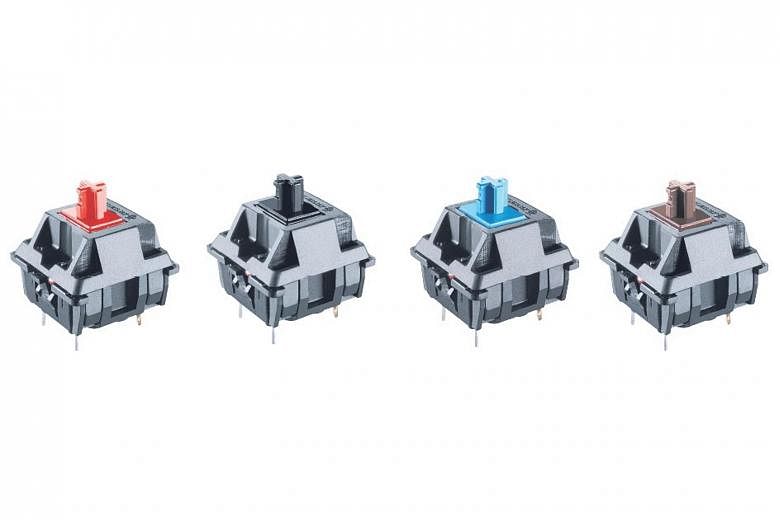Anyone who grew up using computers in the 1980s will instantly recognise the IBM Model M keyboard. Launched more than 30 years ago, it is, like all keyboards then, a mechanical keyboard as it used a buckling spring mechanism to produce a solid click when a key is pressed.
The Model M became the most influential keyboard ever and has spawned countless clones. In fact, the layout of the keys on a modern, full-size keyboard is largely identical to the Model M's.
The advent of membrane and rubber-dome keyboards, which are cheaper to make and less bulky, led to a decline in the Model M's popularity. But mechanical keyboards are back in vogue in recent years, and are preferred by gamers and others who value their tactile and clickety feel.
The modern mechanical keyboard still uses springs, except that the springs do not buckle. Each key has an individual, physical switch that, when depressed, is registered as a keystroke by the computer. When you lift your finger, the spring pushes the key back to its original position.
TYPES OF MECHANICAL SWITCHES
Broadly speaking, there are three major types of mechanical switches.
First are linear switches, which go up and down smoothly without loud clicking noises or tactile feedback. Next are tactile switches, which add a bump to indicate that the key has been registered. The third type, clicky switches, have a bump as well as a loud click to tell you that the key has been pressed.
Cherry is the dominant maker of mechanical switches - its MX series is found in most mechanical keyboards. Thus, we will be using Cherry's most common switches to illustrate their differences and usage modes. We are also only touching on the more popular switches as there are just too many types to cover.
But, more importantly, it is best to try these switches for yourself as it ultimately boils down to personal preferences.
Cherry uses a different colour for each type of switch. They are differentiated by the amount of force for a key press to be registered, known as actuation force (typically measured in grams or centinewtons), as well as by whether the switch offers tactile feedback, a loud click, or both.
CHERRY MX RED
This linear switch feels light and is easy to press. A gentle tap is enough, as it requires just 45g of actuation force. It is also relatively quiet, with no tactile feedback or clicking noise.
Best for fast-paced games where players are not severely disadvantaged if they hit the wrong keys by accident.
CHERRY MX BLACK
Similar to the Red version, in that it is quiet and has no tactile feedback. But the Black switch requires a heavier touch (60g of actuation force) and may be more tiring for extended usage. Best for real-time strategy games where accidental key presses may be costly.
CHERRY MX BLUE
With a loud clicking noise and requiring 50g of actuation force, the Cherry MX Blue provides both tactile and audio feedback. It is harder to double-tap this switch because of its higher actuation force.
Best for typists because of the tactile feedback. However, it is noisy and may disturb your neighbours in the office. Gamers may not like its heavy touch.
CHERRY MX BROWN
Think of this as a mix of Red and Blue switches. This middle-of-the- road switch has a tactile bump when pressed but it is quiet with no loud click. It also takes as much force to press as the Red switch.
Best for both typing and gaming, Brown is a good choice if noise is a concern.
OTHER SWITCHES
Gaming hardware makers like Logitech and Razer have also introduced their own proprietary switches to compete with Cherry. Both offer higher lifespan of around 70 million to 80 million keystrokes per key, compared with Cherry's 50 million.
Logitech's Romer-G switch competes with Cherry MX Red as it is both light and quiet. It takes just 1.5mm of travel distance to trigger the Romer-G switch, compared with 2mm for Cherry MX Red.
Razer has its Green switch, which is heavy and noisy like the Cherry MX Blue. Its Orange switch is quiet and similar to the Cherry MX Brown. A new Razer Yellow variant is a linear and silent switch that is more akin to the Cherry MX Red.


